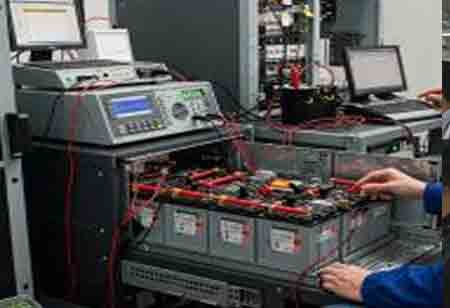Thank you for Subscribing to Electrical Business Review Weekly Brief
I agree We use cookies on this website to enhance your user experience. By clicking any link on this page you are giving your consent for us to set cookies. More info
Innovations in Battery Management System Testing in Canada
Emerging battery management systems (BMS) present a unique set of testing challenges as they grow to satisfy the increasing needs of modern energy storage applications.

By
Electrical Business Review | Friday, August 29, 2025
Stay ahead of the industry with exclusive feature stories on the top companies, expert insights and the latest news delivered straight to your inbox. Subscribe today.
Fremont, CA: Battery management systems (BMS) are rapidly growing to meet the demands of modern energy storage applications, presenting unique testing challenges. One major challenge is accurately simulating real-world operating conditions, including temperature variations, charging and discharging cycles, and varying load conditions.
Recreating these conditions in a controlled testing environment is complex, requiring advanced simulation tools that can emulate diverse operating states. The ability to test under the conditions is essential to validate a BMS's performance for applications like EVs, where extreme conditions are common. Intentionally pushing a battery system to its limits can pose risks during testing. Engineers in Canada must develop safe yet rigorous testing protocols to assess the system's fault detection and response mechanisms without causing harm to equipment or personnel.
Navigating the Challenges of Diverse Battery Chemistries
The increasing complexity of battery chemistries, such as lithium-ion, solid-state, and next-generation batteries, poses a challenge for BMS testing. Each chemistry has unique characteristics that require tailored management and monitoring. Testing must account for these differences, including variations in voltage thresholds, thermal behavior, and degradation patterns. Adapting testing procedures for each new chemistry adds complexity and demands flexibility in testing methodologies.
Integration with other systems introduces testing challenges. Modern BMSs connect with external devices and systems, such as vehicle control units, power grids, and IoT platforms. Ensuring seamless communication and interoperability between the BMS and these systems requires extensive testing of data exchange protocols, software compatibility, and cybersecurity measures. Any failure in integration can compromise the overall system's functionality and safety.
Challenges in Testing BMS Amidst Technological Advancements
The rapid pace of technological advancements in BMS design and functionality further compounds testing difficulties. As Canadian manufacturers strive to include features like AI-driven analytics, wireless monitoring, and predictive maintenance, testing procedures must evolve to validate these innovations effectively. Ensuring these advanced features perform reliably without introducing vulnerabilities adds complexity to the testing process.
Scalability is another concern in Canada, particularly for applications like grid storage and EV fleets that involve large-scale battery systems. Testing individual components is not sufficient; engineers must also validate the performance of BMSs in large-scale configurations. Scaling up testing introduces challenges in replicating real-world scenarios and ensuring consistent performance across multiple units. Regulatory compliance adds another layer of complexity. BMS testing must meet stringent industry standards and certifications that vary by region and application.








